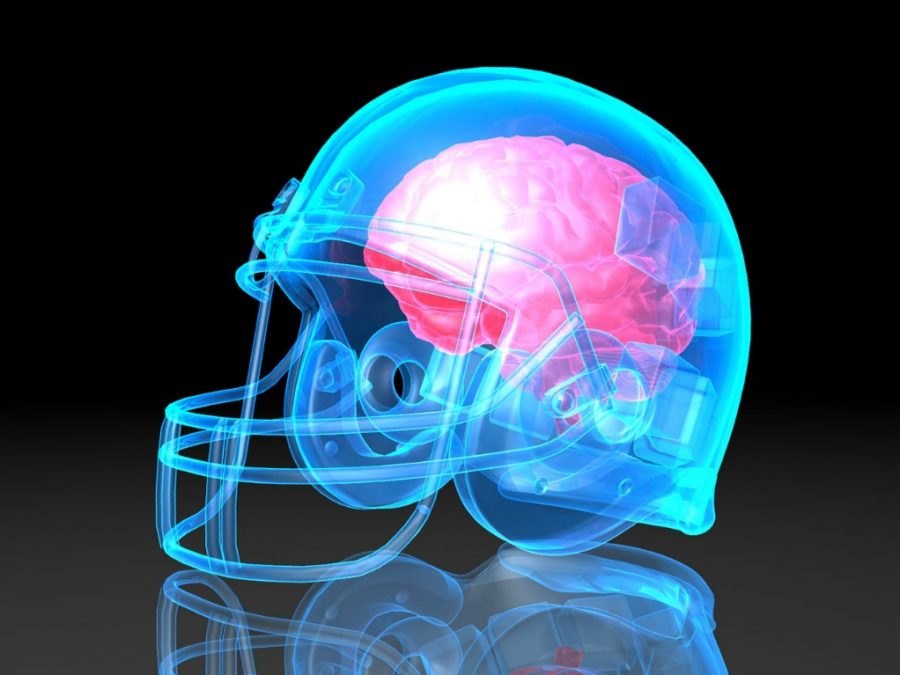The Most Common Sports Injuries
October 18, 2016
Sports like football and hockey have a reputation for the highest rate of injury. However, the risk involved in playing other team sports and the surprising number of injuries associated with recreational sports often goes unseen. The statistics regarding common injuries facing athletes in sports such as cycling, soccer, and basketball point to a more prevalent problem of concussions and other injuries, regardless of how “safe” a sport is considered.
Football is commonly stereotyped as the sport with the highest risk for concussions. Yet, according to the NCAA, concussions make up only 7.4 percent of football injuries. In contrast, damage to lower limbs (legs, ankles, feet), comprised 50.4 percent of injuries between 2004 and 2009. The NCAA specifies that “ligament sprains are the most common injury reported, accounting for more than 30 percent of all injuries, with the lateral ligaments of the ankle and medial collateral ligaments of the knee most commonly affected.”
Another important factor is severity of injury. According to Head Case, football holds one of the highest concussion rates for team sports at around 70 cases per 100,000 athletic exposures at the high school level. Ranked in third place is Girls’ Soccer, with a rate of 33 per 100,000 athletic exposures. While the raw statistics for football suggest a larger problem, soccer players are more likely to suffer a more severe concussion. “Recent studies show that soccer has surpassed football,” said neurologist Peter A. Puzio from Augusta Health Neurology. Furthermore, football teams have taken precautions against traumatic head injuries, and some players have quit due to fear of developing chronic traumatic encephalopathy, or CTE. These ex-football players often move to sports perceived as safer – namely, soccer. However, the very nature of the game makes players more prone to severe concussions. According to Puzio, a soccer ball travels up to 60 miles an hour, and collides with players’ unprotected heads whenever a player takes a header.
Even with the high rates of head injuries in organized team sports, recreational sports actually have the greatest risk of concussion. Surprisingly, horseback riding is the cause of the most concussions in the United States. Researchers for the journal Neurosurgical Focus analyzed ER visits between 2003 and 2012 in six categories, including contact sports, roller sports, skiing/snowboarding, equestrian sports, and water sports. They found that equestrian sports accounted for 45 percent of all the cases of traumatic head injury. Contact sports, the category encompassing football, soccer, and hockey, only had 20 percent of the total count. “Brain injuries in professional athletes… represent only a small fraction of the overall incidence of TBI [traumatic brain injury] annually; the vast majority of these injuries occur in recreational athletes,” the researchers said. Furthermore, young adults had the highest TBI rate, with patients between the ages of 18 and 29 consisting of 44 percent of all sports-related TBI’s, according to Deseret News. The other unnoticed cause of head trauma is cycling. According to the American Association of Neurological Surgeons, emergency rooms treated 447,000 sports-related head injuries in 2009. Out of that number, around 86,000 cases were caused by cycling, and only 47,000 were caused by football. In children under 14, cycling caused nearly twice as many head injuries as football, according to the New York Times. This high rate of injury is partly caused by cyclists neglecting to use helmets, and a higher risk of colliding with motor vehicles.
Avoiding injury as an athlete takes much more than choosing a stereotypically “safe” sport. It takes awareness of where danger really lies, and knowledge of how to avoid it. Especially in the case of long-lasting head injuries, safety is paramount; overlooked causes of concussions and brain trauma have the potential to seriously impact an athlete’s future, whatever their sport, if they are left unaddressed.









![Edina Boys team cheering on swimmers during race on December 15th meet versus STMA at Art Downey Aquatic Center.
“We practice for two hours Monday through Thursday. And then we get [to the meet location] a bit ahead of time and then do some more [practice before the meet],” senior captain Leo Mellum said, who swam the 200 IM and 100 Fly.](https://edinazephyrus.com/wp-content/uploads/2023/12/zcoYsx0FYOC7bDXggROFhKXgQqO3uMaoP6PpCzqg-600x400.jpg)
